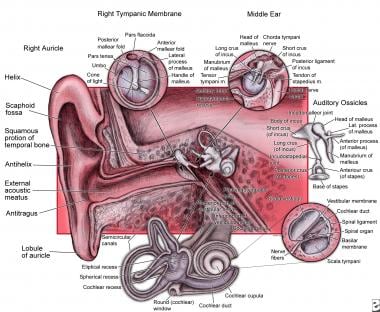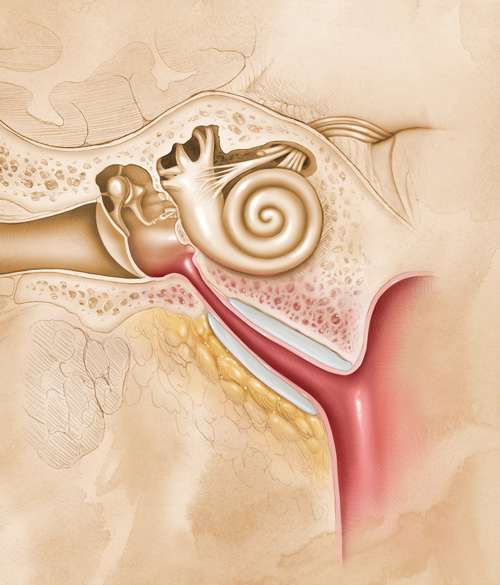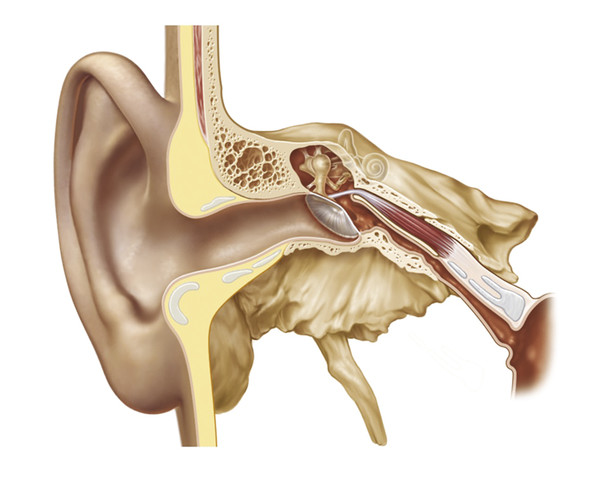

A technique using a carbon dioxide or 980-nm diode laser to vaporize the mucosa and cartilage of the luminal posterior wall of the pharyngeal ostium ( 5). One focused on solving obstructions at the level of the isthmus within the Eustachian tube using laser Eustachian tuboplasty (LETP), developed by Kujawski in 1997. Regarding the treatment of ETD, multiple techniques have been used like treatment with nasal xylometazoline and grummets. As a long-term complication, ETD can lead to pathologic changes in the tympanic membrane with adhesive processes, retraction pockets, and chronic otitis media with effusion. The physiological functions of the Eustachian tube include the ventilation of the middle ear, mucocilliary clearance of secretions, pressure equalization, protection from sounds, and pathogens ascending from the nasopharynx. ETD can cause clinical symptoms such as intermittent or chronic ear pressure, aural fullness, tinnitus, ear noises (such as cracking and popping), discomfort, numbness of the ear, hearing loss, and autophony ( 3, 4).

Up to now, the function of the Eustachian tube is considered to be highly complex. Rapid middle ear pressure changes are assumed to cause BET-related hearing loss.Įustachian tube dysfunction (ETD) is known to be one of the most common problems seen in ENT-clinics and has an estimated prevalence of 1–5% in adults ( 1, 2). The rate of permanent SNHL is 0.08%.Ĭonclusion: BET has a low rate of SNHL. The overall rate of SNHL per procedure is 0.3%. In two cases of SNHL, a simultaneous tympanoplasty was performed. In two cases, the SNHL persisted, and in five cases, the SNHL was transient.

Results: We observed seven cases of SNHL after BET. Methods: We retrospectively evaluated in a chart review 1,547 patients and 2,614 procedures of BET performed in a single center between 20 using the Spiggle and Theis, Overath, Germany eustachian tube dilatation system. The aim of the present study was to observe the rate of sensorineural hearing loss (SNHL) after BET. Although BET is widely performed, little is known about the occurrence rate of the complications associated with BET. Balloon Eustachian tube dilatation (BET) is a treatment option used to solve eustachian tube dysfunction. A dysfunction can be associated with chronic otitis media, and cholesteatoma. Objective: Eustachian tube function is of central importance for the ventilation of the middle ear.


 0 kommentar(er)
0 kommentar(er)
